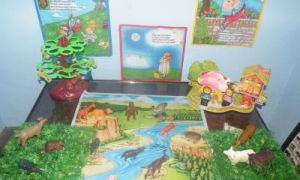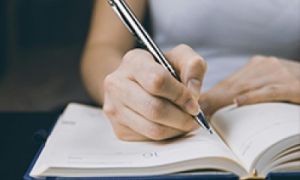The following provides a playful mix of language and literacy experiences perfect for toddlers (around 2–3 years), designed to build vocabulary, listening, and early communication skills through everyday fun.
Nursery Rhyme Actions
Pair classic rhymes like “Row, Row, Row Your Boat” or “Twinkle Twinkle” with hand motions. Toddlers love repetition, rhythm, and movement—it helps them anticipate words and sounds.
Interactive Storytime
Use books with flaps, textures, or sounds. Pause to ask, “What’s that?” or “Can you find the dog?” to encourage pointing, naming, and turn-taking.
Puppet Chats
Use finger puppets or soft toys to “talk” to the child. This encourages back-and-forth conversation and imaginative play. Bonus: it’s great for shy toddlers!
Mark Making with Meaning
Offer crayons, chalk, or paint and narrate what they’re doing: “You’re drawing a big circle!” This links language to action and builds symbolic thinking.
Label the World
Label objects around the room with simple words and pictures (e.g., “chair,” “cup,” “ball”). Point to them during play and routines to build word recognition.
Sing & Sign
Introduce simple Auslan or baby sign language alongside songs. Signing “more,” “eat,” or “book” while saying the word helps toddlers connect meaning and sound.
Story Basket Play
Fill a basket with themed items (e.g., farm animals, food, transport). Use them to tell a story or act out a book. Toddlers can explore, name, and mimic sounds.
Talk Through the Day
Narrate routines: “We’re putting on your shoes. One shoe, two shoes!” This constant exposure to language builds comprehension and vocabulary naturally.
Alphabet Washing Station
Write letters on plastic toys or foam letters and place them in a tub of soapy water. Toddlers “wash” the letters while you name them together. Add a sponge and say, “Let’s find the letter B for ball!”
Laundry Basket Sound Sort
Place objects or picture cards in a basket. Toddlers pull one out and match it to a sound basket (e.g., “B” for ball, “C” for car). Keep it simple and fun—no pressure to get it “right.”
Animal Sound Parade
Use animal figurines or puppets. As toddlers pick one, model the sound and a simple sentence: “The cow says moo! The cow is big.” Great for vocabulary and sentence structure.
Snack Chat
During snack time, talk about textures, colors, and shapes: “Your apple is red and crunchy!” This builds descriptive language in a natural, relaxed setting.
Name Puzzle Play
Write each child’s name on a strip of cardboard and cut it into 2–3 pieces. Toddlers match the pieces to rebuild their name. Add photos for extra support.
Paint & Tell
Offer paint or markers and ask, “Can you tell me about your picture?” Scribe their words underneath. This links expressive language to early writing.
Dramatic Play Dialogues
Set up a pretend café, vet, or shop. Model phrases like “Can I help you?” or “What would you like?” Toddlers love repeating real-world language in play.
Mystery Box Vocabulary
Fill a box with themed items (e.g., kitchen tools, soft toys). Toddlers reach in, feel, and guess what it is. Describe it together: “It’s soft… it’s round… it’s a ball!”
Frozen Alphabet Rescue
Freeze small plastic letters in ice cube trays. Give toddlers warm water, droppers, or spoons to “rescue” the letters. As they melt the ice, name the letters and say words that start with them. Sensory + literacy = magic!
Story String
Use a piece of yarn and clip or tape pictures along it (e.g., sun, dog, tree). Toddlers help “read” the story by pointing to each picture as you narrate. Invite them to add their own ideas or swap pictures to change the story.
Juice Box Microphone
Turn an empty juice box into a pretend microphone. Toddlers take turns “singing” their favorite songs, saying their name, or telling a short story. It’s a fun way to build confidence and expressive language.
Sock Puppet Conversations
Create simple sock puppets with googly eyes or drawn-on faces. Use them to model greetings, emotions, or silly stories. Toddlers can talk through the puppet, which often feels safer than speaking directly.
Further Reading
Children's Learning Through Literacy
Creating A Literacy-Rich Environment For Children
Literacy Activities For Children In Early Childhood



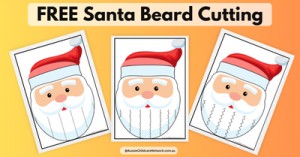
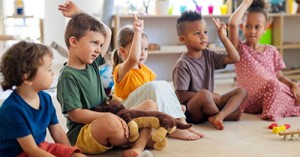

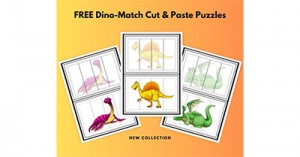
 Open ended questions cannot be responded to with one word answers such as yes or no. These types of questions enables a child to provide
Open ended questions cannot be responded to with one word answers such as yes or no. These types of questions enables a child to provide During your child’s preschool years, an important milestone begins to emerge. This is the development of pre-writing skills. Pre-writing skills are used to encourage, develop
During your child’s preschool years, an important milestone begins to emerge. This is the development of pre-writing skills. Pre-writing skills are used to encourage, develop Open ended materials enables children to play freely. They are objects that have no rules to follow, use or function. Raw materials that can be
Open ended materials enables children to play freely. They are objects that have no rules to follow, use or function. Raw materials that can be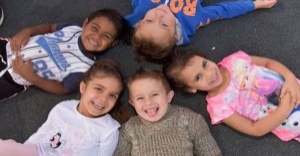 An Acknowledgment of the Country is a way of showing respect for the Traditional Owners and can be given by both non-Indigenous people and Aboriginal
An Acknowledgment of the Country is a way of showing respect for the Traditional Owners and can be given by both non-Indigenous people and Aboriginal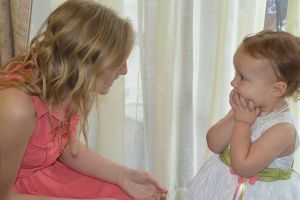 Language plays an important role in a child’s development. It enables a child to communicate effectively with their family, learn at school, socialize with friends,
Language plays an important role in a child’s development. It enables a child to communicate effectively with their family, learn at school, socialize with friends,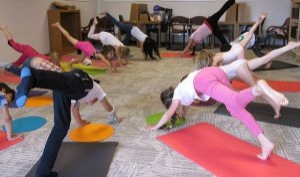 Like adults, children have to deal with their own stress in life. Moving house, starting a new school, preparing for a new sibling - these are
Like adults, children have to deal with their own stress in life. Moving house, starting a new school, preparing for a new sibling - these are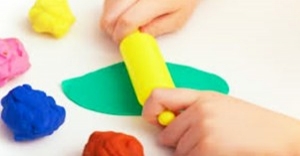 Playdough is such a versatile material. It provides numerous benefits to children as they manipulate it, it is safe and soothing and provides children with
Playdough is such a versatile material. It provides numerous benefits to children as they manipulate it, it is safe and soothing and provides children with Teaching children about sustainability enables them to appreciate and respect the natural environment. Early childhood services can provide meaningful hand on learning experiences in order
Teaching children about sustainability enables them to appreciate and respect the natural environment. Early childhood services can provide meaningful hand on learning experiences in order Recycling is an important concept that teaches children to care for the environment. It encourages children to be responsible and show a growing appreciating for
Recycling is an important concept that teaches children to care for the environment. It encourages children to be responsible and show a growing appreciating for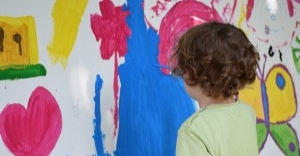 When children apply paint to paper, glue things together, or pound a lump of clay, they experiment with colour, shape design and texture.
When children apply paint to paper, glue things together, or pound a lump of clay, they experiment with colour, shape design and texture.
